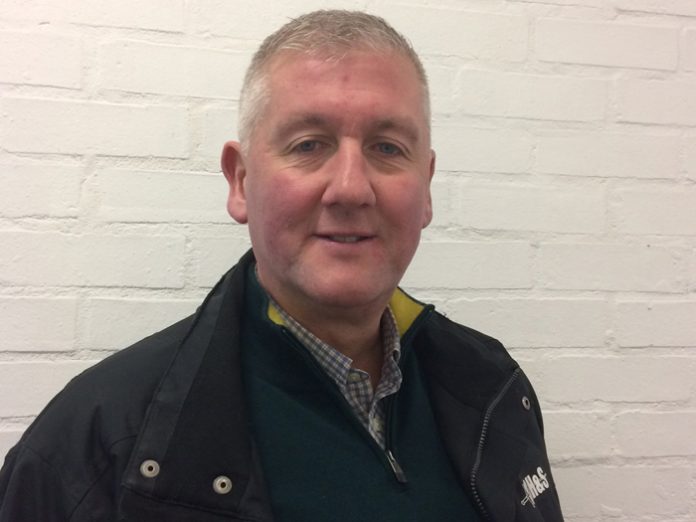Steve Kearney is one of the live event industry’s leading Chartered Safety and Health Practitioners. Starting his career as a roadie for The Clash, he worked on subsequent rock tours, becoming increasingly interested and qualified in safety related matters. In 2010 he formed Gallowglass Health and Safety, offering advice, training and consultancy.
The clock has started to tick loudly for festival organisers, especially those whose events take place at the end of June. And it’s round about now that a few of you may notice a queasy sensation in the pit of your stomach whenever the subject of health and safety crops up. So if you haven’t yet grasped the nettle, the time has come to start thinking about how you are going to deliver a safe and incident-free event.
By now you’ll hopefully have obtained your Premises Licence – or Temporary Event Notice if the festival’s capacity is below 500. Licence applications are complex and can take months to finalise, so ideally you should have contacted the relevant licensing authority as early as possible in the planning process. Even when the owner of the site or venue already has a licence, they may insist on your applying for your own.
But if you haven’t yet got down to this, you’ll need to put together documentation that satisfies the authorities that the premises will be run in accordance with the licensable objectives – relating to the prevention of crime and disorder, public safety, prevention of public nuisance and the protection of children from harm.
Many festivals involve a number of licensable activities, the most obvious being the sale of alcohol, performance of live music and playing of recorded music.
Each Premises Licence is specific to that event, incorporating the provisions of the 2003 Licensing Act and then further adjusted to reflect specific conditions. If you compare the factors impacting a festival held on Exmoor with one taking place in Hyde Park, it’s easy to see why one size can’t possibly fit all.
Just to make things interesting, local authorities vary widely in their interpretation of the Licensing Act, so if this year sees you moving to a new site, don’t assume that requirements will be the same as at your last location.
Some authorities will provide you with a checklist of requirements; others have a much more hands-off approach and might not even be concerned to highlight activity that must be legislative-compliant. This might feel like being let off the hook, but it actually creates a false sense of security, because the responsibility for complying with the law to maintain a safe festival environment lies with the organiser. And ignorance is no defence. In the event of a fatality or a serious incident you could face prosecution for failing to adhere to licensable conditions, or failure to adequately plan and prepare.
Each local authority has a Safety Advisory Group (SAG) which considers event licensing requests and offers advice and guidance to organisers. It’s important to work proactively with the SAG, and meet their terms and conditions. If you don’t follow their guidance you could find your application refused or, further down the line, your licence revoked.
The SAG brings together key stakeholders, including the Borough Council, Police, Environmental Health, Ambulance and Fire services. Organisers planning a licensable event will almost certainly be required to attend at least one SAG meeting. Among other aspects, they’ll advise you of any prevailing circumstances that need to be factored in. It’s always possible that a sporting event, agricultural show or even major roadworks in the vicinity would impact traffic flow on key dates.
You will probably have designated a safety co-ordinator who will attend the SAG meetings, and this person should be fully qualified and experienced in event health and safety. They will be responsible for ensuring the operation of the event complies with all relevant legislation, to ensure the safety of everyone onsite, from build to de-rig.
As the person responsible for the Event Safety Management Plan (ESMP), they will conduct a thorough risk assessment, including capacity calculations, both for structures and for emergency routes and exits. The ESMP will also include a Construction Phase Plan to ensure compliance with the Construction Design Management (CDM) Regulations 2015.
They’ll also obtain and check all contractors’ safety policies and risk assessments, as well as the organiser’s Employer’s Liability insurance.
Emergency planning is obviously a key element of their role, and this will encompass fire safety and extreme weather monitoring and procedures, together with medical centre resourcing and emergency evacuation plans.
The safety co-ordinator could produce a suitable and sufficient safety induction for all staff, volunteers and freelancers, and ascertain their competence in complying with the CDM 2015 Regulations.
Site inspections – including all structures and electrical services – before, during and after the event are also an essential element of their remit.
Best practice in health and safety includes provision of a clear paper trail, so that in the unfortunate event of a major incident, documentation would be readily available for analysis by the local authority, Police and Health and Safety Executive.
If any of the above points come as news to you, and you weren’t aware of the extent and scope of a festival organiser’s health and safety responsibilities, you face an uphill slog in putting together a safe venue infrastructure in the remaining timeframe. At this point it might be wise to consider ramping up your external expertise. One advantage in hiring in a festival-experienced specialist is that they know exactly what needs to be delivered to be legislation compliant. One of the most common responses that we hear from organisers is: “We didn’t realise we had to do that”.
The starting point for an incoming safety consultant will be to produce a check list to identify any areas that have been overlooked. They’ll also be able to draw on their knowledge and experience to speed-up the preparation of risk assessments, emergency procedures, medical and child welfare policies.
Liaising with local authorities, police and emergency services, they’ll produce the ESMP, documenting the roles and responsibilities of the management team.
The consultant will be well-placed to recommend any helpful external expertise, such as an acoustics expert to assist with a noise management plan, and they’ll gauge whether any additional resource is warranted – for example to provide 24-hour safety site management during the live days.
From experience, they’ll also know the optimum placement of signage to cover traffic and evacuation routes, first aid points and pedestrian / vehicle separation.
With the objectivity of an outsider, they’ll be best-placed to watch for and stop any unsafe working practices, systems or equipment. They’ll take and keep records of action taken and liaison with the licensing authority about any significant necessary action that was taken.
This list is not exhaustive; every festival has its own characteristics and circumstances, but what they all have in common is the potential for major incident and even fatality. By leaving nothing to chance and thinking proactively now about risks and contingency planning, you stand the highest chance of delivering a safe and successful event.






